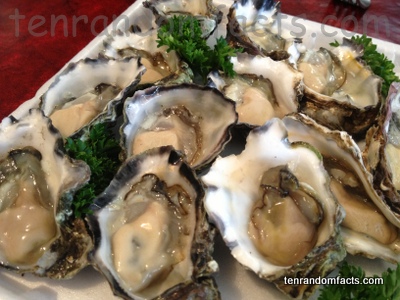Collect the pearls and eat the oyster.
- Oysters are aquatic animals that are typically found in saltwater habitats around the world, and they can be found attached to rocks, water structures and other objects.
- The term ‘oyster’ generally refers to a loosely grouped collection of clams, that are from the class Bivalvia, the class of bivalve molluscs, however, Ostreidae, is the family of true ones, of which the edible creatures belong to.
- The hard shell of an oyster is typically a variety of colours, that can include tan, white, brown, black and yellow, and they range from 3 to 36 centimetres (1.2 to 14 inches) in length.
- Some oyster species can produce pearls, however pearls are generally cultivated or obtained from the distant relatives in the Pinctada genus, that belong to Pteriidae family, the family of feather oysters.
- Oysters have a diet that primarily consists of plankton or other microscopic objects in the water, that is collected by filtering water through the mollusc’s gills; and the animal is preyed upon by birds, fish, starfish, turtles and crabs; and have a lifespan of one to three years.

- Oysters can produce millions of eggs at one time, which can quickly hatch into larvae, and they permanently establish themselves on a surface after a few weeks.
- Oysters have been part of the human diet since ancient times and are commonly eaten today, often as part of a seafood dish; and they are usually obtained by boating, diving or wading, and gloved hands or rakes are used to pry the molluscs from their permanent surfaces.
- The colour of oyster blood is transparent, and large quantities of water can be filtered by a single animal, with an average of 189 litres (50 gallons) a day.
- Oysters are extremely high in vitamin B12, copper and zinc, and they are high in iron, selenium, and vitamin D, and contain many other vitamins and minerals.
- Oysters need to be fresh when eaten, and the animal cannot be dead before cooking, as they will be toxic; and while the mollusc can be consumed raw, they are commonly cooked, fried, smoked, roasted, steamed, or boiled.
Bibliography:
Oyster, 2013, A-Z Animals, http://a-z-animals.com/animals/oyster/
Oyster, 2015, National Geographic, http://animals.nationalgeographic.com.au/animals/invertebrates/oyster/
Oyster, 2015, Wikipedia, http://en.wikipedia.org/wiki/Oyster
Amazon:







